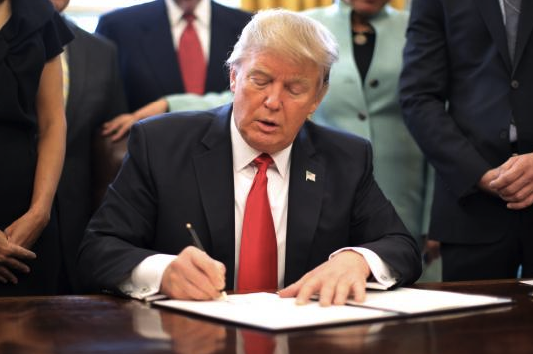Sometimes You Get What You Vote For
Posted on October 17, 2018

Farmers and ranchers spent most of last month hoping the U.S. Department of Agriculture’s (USDA) recent crop estimates would be proven wrong and President Donald J. Trump’s “plan” to fix “the world’s worst trade deals ever” would be proven right.
September, however, disappointed them on both counts.
On Sept. 12, USDA reported that the already big 2018 corn and soybean crops were getting bigger, not smaller. Total corn production was estimated at 14.8 billion bu., the second largest ever, while soybean production was pegged at a record 4.7 billion bu.
The bin-busting crops pushed USDA to lower the estimated 2018/19 average price for both: $3.50 per bu. for corn, $8.60 per bu. for beans.
Shortly after that tough news, the Trump Administration imposed a new 10 percent tariff on $200 billion more of Chinese exports to the U.S. Beijing immediately retaliated with $60 billion in new tariffs on U.S. exports to China.
Neither the thinning market prices nor the thickening trade tariffs arrived as a surprise.
Huge planted acres (89.1 million for corn, 89.6 million for soybeans) coupled with better than average weather usually brings record crops and, soon enough, record-challenging low prices. That’s exactly what is happening.
Similarly, populist campaign rhetoric coupled with a grave misunderstanding of trade economics (U.S. tariffs hit Americans, not foreigners; a trade deficit between two nations is evidence of economic growth, not growing debt) usually brings an enormous policy mistake. Again, that’s exactly what is happening.
Now what?
Now it gets worse—and there’s no “before it gets better” in sight—for two reasons. First, as most farmers know, “Big crops get bigger.” That means today’s low prices are going nowhere fast. Second, farmers and ranchers are starting to realize that there is no grand Trump “plan” to fix U.S. trade.
In fact, the Trump Administration has been winging its choppy, confounding, and reactionary approach to U.S. trade policy since Inauguration Day. For example, there was no independent analysis done to support its third-day-in-office exit of the Trans-Pacific Partnership. It just did it.
Now, however, the Administration eagerly wants to talk trade with several of the pact’s remaining 11 nations to get a “deal” nearly identical to what it and U.S. farmers could have had 20 months ago. Good luck.
Even more unplanned is the bitter NAFTA scrum the Trump Administration has opened up with Canada over—of all things—milk, despite the clear fact that America imports $137 million of Canadian dairy products and exports $470 million of dairy goods to its northern neighbor.
It’s even worse than that, Tony Fratto, an American free trade advocate and George W. Bush White House veteran, told the New York Times Sept. 26.
“Opening up Canada’s very tiny dairy industry is a pretty tiny gain to risk blowing up the most advantageous trade agreement in history. It won’t make a dime’s bit a difference to jobs and standards of living in either country. Try to fix these things? Sure. Blow up NAFTA over them? That’s crazy.”
Actually, it’s even crazier than that, added the Times.
“Ironically, lowering Canada’s dairy barriers had already been ironed out over years of arduous negotiations that led to the Trans-Pacific Partnership, a sweeping trade agreement… that Mr. Trump withdrew the United States from…”
That’s the honest reality the White House chooses to ignore, however, even as it continues to push its Our Way or the Highway trade strategy on almost every key American ag trading partner—China, Mexico, Canada, the European Union, and Japan—with little to nothing to show for it now, or to plausibly gain later.
Worse, when the President isn’t attacking our paying customers, he’s threatening to outright withdraw the U.S. from the World Trade Organization, a foolproof recipe for global trade collapse.
None of this should be a surprise in farm and ranch country. Candidate Trump promised today’s Twitter-littered approach to trade over and over during the 2016 presidential race. He said he’d do it and, with no plan in-hand and no end in sight, he’s doing it.
If there’s any surprise at all here, it’s that sometimes you get exactly what you vote for.
© 2018 ag comm
Share This